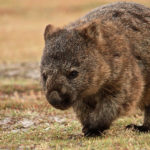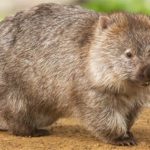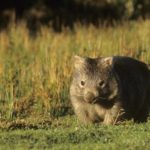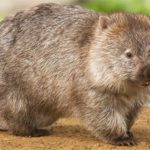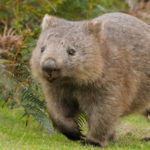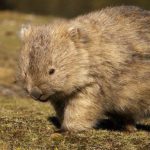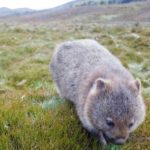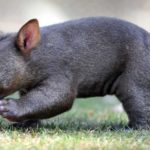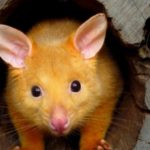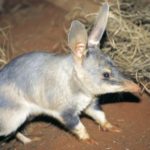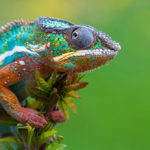Wombats – information
 Wombats are burrowing burrows of herbivorous animals from Australia, outwardly resembling small bears. Wombats reach a length of 71 to 121 centimeters and weights from 21 to 44 kilograms. The body of the wombat is compact, the limbs of the wombat are strong and short. Each of the paws has five fingers, four of which are surmounted by large claws, well suited for burrowing holes. A large head and gives the impression of slightly flattened from the sides, the eyes of the wombat are small, the tail is short.
Wombats are burrowing burrows of herbivorous animals from Australia, outwardly resembling small bears. Wombats reach a length of 71 to 121 centimeters and weights from 21 to 44 kilograms. The body of the wombat is compact, the limbs of the wombat are strong and short. Each of the paws has five fingers, four of which are surmounted by large claws, well suited for burrowing holes. A large head and gives the impression of slightly flattened from the sides, the eyes of the wombat are small, the tail is short.
Among the marsupials, the wombat has the smallest number of teeth – only 12. It is curious that the jaws and teeth of the wombat show similarity to the jaws and teeth of rodents. In the lower and upper rows, the wombats have a pair of anterior cutting teeth. Angular teeth are absent, chewing teeth are constructed very simply.
Wombats live in eastern and southern Australia, in the states of New South Wales, South Australia, Victoria, Tasmania and Queensland. Distributed in various habitats, but wombats always need a land suitable for digging holes.
Wombats are the largest of modern mammals engaged in digging holes. In addition, most of the life of wombats is carried out underground. With their sharp claws, they tear out small residential caves in the ground. Sometimes wombat holes form quite complex tunnel systems. As a rule, most of the burrows reach about 19.9 meters in length and 3.49 meters in depth. In the event that the parts of individual individuals intersect, caves can be used at different times by different wombats. Wombats are active at night, when they go out in search of food. In the afternoon, Wombats rest in their shelters.
The adult wombat has practically no natural enemies. One of the few enemies is a dingo man brought to Australia. In wombata, the back of the body is extremely hard because of very thick skin, bones and cartilage. On the pelvic bones, in the back of the back, the wombat has something like a shield that protects it when attacking from behind. In case of danger, they can turn their backside, block their hole and repel most attackers, or they can crush their paws against the walls of their cave. If the dog climbs into its hole wombata, he does not leave the place waiting for her, and then tries to drive into a corner or to the wall of the burrow, and there to suffocate with the help of the rear flap. The wombat can also inflict heavy blows to the head – it is bitten, like a goat or a ram, although it does not have horns. Most often in the death of a wombat, the person is to blame: so, many wombats die on the roads under the wheels of cars. In areas where the human impact on nature is small, the level of the wombat population is determined by the availability of suitable food.
The area of the wombat sites varies depending on the external conditions from 5 to 25 hectares. Wombs mark their territory with excrement and built dwellings. Wombat protects its site aggressively enough. If the owner meets an uninvited guest, he shakes his head threateningly from side to side and mumbles. Often this is enough to drive the invading wombat. However, sometimes it comes to fights, in which wombats can inflict sufficiently serious wounds on each other.
